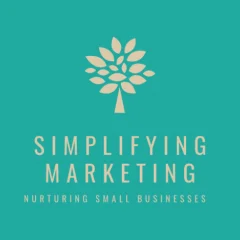In the ever-evolving landscape of business, two concepts stand out as perennial objectives: growth and success. These aspirations drive entrepreneurs, executives, and employees alike to strive for excellence, innovation, and profitability. Yet, amid this pursuit, one cannot ignore the prevalence of business jargon – the specialized language used within corporate environments. This article delves into the nexus of growth, success, and the use of jargon in business, exploring why people resort to such linguistic nuances and its implications on organizational dynamics.
Understanding Growth and Success
Defining Growth
Growth in business encapsulates the expansion of an organization’s operations, revenue, market share, and influence. It embodies progress and development, signifying an upward trajectory in various metrics such as sales figures, customer base, and geographical reach. Whether it’s through organic means or strategic acquisitions, growth is a fundamental goal for businesses seeking to thrive in competitive landscapes.
The Essence of Success
Success, on the other hand, is multifaceted, encompassing both tangible and intangible achievements. While financial prosperity often serves as a benchmark for success, it also incorporates elements of innovation, customer satisfaction, employee engagement, and societal impact. True success extends beyond monetary gains, reflecting the ability of an organization to create value, foster relationships, and contribute positively to its stakeholders and the community at large.
The Role of Jargon in Business Communication
Unpacking Business Jargon
Jargon permeates the lexicon of corporate communication, serving as a shorthand for conveying complex ideas, strategies, and processes. It comprises specialized terminology, acronyms, buzzwords, and industry-specific phrases that may seem opaque to outsiders but foster cohesion and efficiency within organizational contexts. From “synergy” and “paradigm shift” to “disruptive innovation” and “think outside the box,” jargon reflects the culture, values, and priorities of a company while facilitating effective communication among insiders.
Why People Use Jargon
1. Clarity and Precision:
In certain scenarios, jargon enables professionals to communicate with clarity and precision, especially when discussing technical or nuanced topics within their respective fields. By employing industry-specific terminology, individuals can convey complex concepts succinctly, reducing the likelihood of misinterpretation or ambiguity.
2. Establishing Credibility:
Utilizing jargon can also serve as a means of establishing credibility and expertise within professional circles. Those proficient in industry-specific language demonstrate their familiarity with the intricacies of their field, positioning themselves as knowledgeable insiders who understand the nuances of the business landscape.
3. Cultural Cohesion:
Within organizations, jargon fosters a sense of cultural cohesion and belonging among employees. Shared linguistic norms create a sense of camaraderie and identity, reinforcing the collective ethos of the company and aligning individuals towards common objectives.
4. Efficiency in Communication:
Jargon streamlines communication processes by enabling professionals to convey complex ideas efficiently. Rather than resorting to lengthy explanations, individuals can leverage shorthand terminology to convey nuanced concepts, saving time and minimizing the risk of miscommunication.
The Pitfalls of Jargon Overuse
While jargon can enhance communication within organizational settings, its overuse or misuse can hinder clarity, alienate stakeholders, and contribute to a culture of exclusivity. Excessive reliance on jargon may obscure meaning, create barriers to entry for newcomers, and perpetuate an echo chamber mentality where insiders communicate in insular language, disconnected from external perspectives.
Balancing Growth, Success, and Effective Communication
In navigating the intersection of growth, success, and business jargon, organizations must strike a delicate balance between leveraging specialized language for clarity and cohesion while remaining mindful of its potential pitfalls. Here are several strategies to foster effective communication in the pursuit of organizational objectives:
1. Clarity as a Priority:
Prioritize clarity and simplicity in communication, avoiding unnecessary jargon or convoluted language that may obfuscate meaning. Encourage transparency and openness in dialogue, ensuring that all stakeholders can comprehend and contribute to discussions effectively.
2. Contextual Awareness:
Recognize the appropriate contexts for employing jargon and tailor communication strategies accordingly. While specialized terminology may be essential in technical discussions or industry-specific contexts, strive to maintain accessibility and inclusivity in external-facing communications and interactions with diverse audiences.
3. Continuous Learning and Adaptation:
Foster a culture of continuous learning and adaptation, encouraging employees to expand their vocabulary while remaining cognizant of the evolving nature of language and communication norms. Embrace diversity of thought and expression, valuing clarity, empathy, and inclusivity in all forms of communication.
4. Feedback Mechanisms:
Establish feedback mechanisms to solicit input from stakeholders regarding the effectiveness of communication strategies and the impact of jargon on comprehension and engagement. Actively seek diverse perspectives and be receptive to constructive criticism, iterating on communication practices to enhance clarity and resonance.
In the dynamic landscape of business, the pursuit of growth and success remains paramount, driving organizations to innovate, evolve, and adapt to changing market dynamics. Amidst this journey, the use of jargon in business communication serves as a double-edged sword – a tool for enhancing clarity and cohesion within organizational contexts, yet also a potential barrier to inclusivity and understanding. By fostering a culture of clarity, contextual awareness, continuous learning, and feedback, organizations can navigate the nuances of business jargon while fostering effective communication that drives sustainable growth and meaningful success.
Explore FAQs about growth and success to drive your organization towards sustainable prosperity.
Growth and Success FAQ
- Growth and Success
- What does Unlocking potential Mean?
Unlocking potential means tapping into or unleashing the hidden or untapped capabilities, opportunities, or value within a business, product, or individual. It involves identifying and removing barriers, constraints, or limitations that inhibit growth or performance to realize maximum potential and achieve desired outcomes or results.
- What does Win-win Mean?
Win-win refers to a situation or outcome that benefits all parties involved or affected. It involves finding mutually beneficial solutions, agreements, or compromises where each party gains something of value without sacrificing the interests or needs of others. Win-win outcomes are often characterized by cooperation, collaboration, and shared success.
- What does Strategic expansion Mean?
Strategic expansion refers to planned and purposeful growth initiatives aimed at expanding a business’s reach, market presence, or capabilities in alignment with its long-term goals and objectives. It involves identifying opportunities for growth, evaluating risks, and executing strategic initiatives to capture new markets, customers, or opportunities for success.
- What does Streamline Mean?
Streamline means to simplify, optimize, or improve the efficiency of processes, workflows, or operations by eliminating unnecessary steps, redundancies, or inefficiencies. It involves reengineering processes, automating tasks, or redesigning workflows to make them more efficient, effective, and responsive to business needs.
- What does Sustainable growth Mean?
Sustainable growth refers to achieving long-term expansion, profitability, or success in a manner that is environmentally responsible, socially equitable, and economically viable over time. It involves balancing economic growth with social and environmental considerations to ensure continued prosperity without depleting natural resources or harming communities.
- What does Sustained profitability Mean?
Sustained profitability refers to consistently generating positive financial results and returns over an extended period, typically measured in quarters or years. It involves maintaining healthy profit margins, controlling costs, and managing risks to ensure the ongoing financial health and stability of the business.
- What does Synergy Mean?
Synergy refers to the combined or cooperative interaction of different elements, assets, or entities to produce a combined effect greater than the sum of their individual parts. It involves leveraging complementary strengths, resources, or capabilities to achieve mutually beneficial outcomes or synergistic advantages in business operations or strategies.
- What does Exponential growth Mean?
Exponential growth refers to a rapid and significant increase in a business’s size, revenue, or market share over a relatively short period. It often involves a compounding effect where growth accelerates over time, leading to exponential gains in performance and success.
- What does Leveraging Mean?
Leveraging means using existing resources, assets, or opportunities to achieve a greater impact or advantage. It involves maximizing the value of available resources, such as technology, expertise, or relationships, to achieve business objectives more efficiently and effectively.
- What does Low-hanging fruit Mean?
Low-hanging fruit refers to easily achievable goals, opportunities, or improvements that require minimal effort or resources to attain. These are typically the most obvious or readily available opportunities for quick wins or immediate results within a business.
- What does Market dominance Mean?
Market dominance refers to a situation where a company or product holds a significant share of total sales within a particular market or industry, giving it substantial control or influence over market trends, pricing, and competition. Achieving market dominance often requires outperforming competitors and maintaining a strong competitive advantage.
- What does Maximizing potential Mean?
Maximizing potential means fully realizing or exploiting the maximum possible value, performance, or capabilities of something, such as a product, service, or resource. It involves optimizing efficiency, effectiveness, and utilization to achieve the best possible outcomes or results.
- What does Monetize Mean?
Monetize means converting something into revenue or profit. It involves finding ways to generate income from assets, products, services, or activities that were previously non-revenue generating or underutilized. Monetization strategies can include selling products, charging for access, or implementing advertising or subscription models.
- What does Optimize Mean?
Optimize means making something as effective, efficient, or functional as possible. It involves refining processes, systems, or resources to improve performance, productivity, or outcomes while minimizing waste, errors, or inefficiencies. Optimization often requires analyzing data, identifying areas for improvement, and implementing changes to enhance overall effectiveness.
- What does Achieving scalability Mean?
Achieving scalability means creating systems, processes, and infrastructure that can adapt and handle increased demand or growth without sacrificing performance or efficiency. It involves designing a business model that can easily expand or contract in response to changing market conditions or customer needs.
- What does Pivot Mean?
Pivot refers to making a significant change in strategy, direction, or focus to adapt to changing market conditions, customer needs, or internal capabilities. It involves shifting resources, reallocating investments, or repositioning products or services to better align with emerging opportunities or challenges.
- What does Achieving targets Mean?
Achieving targets means meeting predefined goals or objectives set by a business. These targets could include sales targets, production quotas, or performance metrics. Successfully achieving targets is critical for demonstrating progress and ensuring the overall success of the business.
- What does Rapid growth trajectory Mean?
Rapid growth trajectory refers to a sustained path of rapid expansion or advancement in a business’s performance, market position, or overall success. It involves consistently achieving high growth rates or milestones over time, propelling the business toward greater levels of success and achievement.
- What does Building momentum Mean?
Building momentum refers to gradually increasing the pace or progress of a business initiative, project, or strategy. It involves generating excitement, gaining support, and making continuous progress toward a goal, creating a sense of forward motion and energy within the organization.
- What does Scalable Mean?
Scalable means capable of being expanded, grown, or adapted in size or scale to accommodate increasing demand, workload, or growth without negatively impacting performance or quality. Scalable solutions or systems can easily adjust to changing needs or requirements without requiring significant changes or disruptions.
- What does Capitalizing on opportunities Mean?
Capitalizing on opportunities means identifying and exploiting favorable circumstances or situations to gain a competitive advantage or achieve business objectives. It involves recognizing potential opportunities for growth, innovation, or improvement and taking decisive action to leverage them for maximum benefit.
- What does Seamless integration Mean?
Seamless integration refers to the smooth and effortless combination or incorporation of different components, systems, or processes to function together harmoniously and effectively. It involves ensuring compatibility, interoperability, and cohesion between various elements to achieve a unified and cohesive whole without disruptions or inconsistencies.
- What does Capturing market share Mean?
Capturing market share means gaining a larger portion of total sales within a specific industry or market segment relative to competitors. It involves attracting customers away from competitors or expanding the overall size of the market to increase revenue and profitability.
- What does Consistent performance Mean?
Consistent performance refers to maintaining a stable and reliable level of productivity, efficiency, or quality over time. It involves delivering reliable results, meeting expectations, and continuously improving processes to ensure steady progress and long-term success.
- What does Continuous improvement Mean?
Continuous improvement, also known as Kaizen, is the ongoing process of making small, incremental improvements to products, services, or processes over time. It involves identifying areas for improvement, implementing changes, and measuring the results to drive ongoing growth and innovation.
- What does Driving profitability Mean?
Driving profitability means implementing strategies and initiatives to increase the amount of profit generated by a business. It involves maximizing revenue, reducing costs, and improving operational efficiency to enhance overall profitability and financial performance.
- What does Driving success Mean?
Driving success means actively pursuing and achieving positive outcomes or results in business endeavors. It involves setting clear goals, taking decisive action, and overcoming challenges to achieve desired objectives and ultimately succeed in the marketplace.
- What does Accelerated growth Mean?
Accelerated growth refers to a rapid increase in a company’s revenue, customer base, or market share over a short period. It often involves aggressive strategies such as expanding into new markets, introducing new products, or acquiring competitors to achieve significant growth rates.
- What does Achieving milestones Mean?
Achieving milestones means reaching specific goals or markers set by a business to track progress and success. These milestones could include hitting revenue targets, launching a new product, or expanding into new markets. Achieving milestones is essential for measuring progress and staying on track with business objectives.


